Play review of RPG-style roguelike card game 'Gordian Quest' that runs through a collapsed world by strengthening characters by various means

' Gordian ' is a game that incorporates elements of a card game based on deck construction and growth elements such as RPGs such as leveling up and equipment enhancement in
Steam: Gordian Quest
https://store.steampowered.com/app/981430/Gordian_Quest/
Gordian Quest is a game that combines roguelike and card games, such as ' Slay The Spire, ' which has been a smash hit in recent years. The feature is that the deck to be used changes completely according to the random event in the game and the player's own choice, and the RPG-like battle using such a deck. Gordian Quest is in Early Access as of February 2021, but officially supports Japanese. You can change to Japanese from the option.
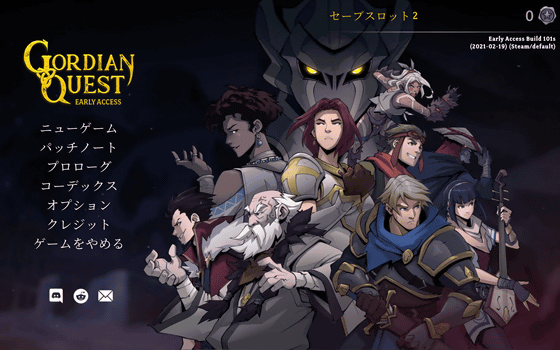
So, actually play from the 'new game'. There are two types of content, 'Area Mode' and 'Strategy Mode', but the Area Mode is a roguelike mode that dies crisply instead of advancing crisply that the enemies and events that come out are determined by luck. The mode is a mode with a strong TRPG color that has a straight line and a story. The strategy mode is quite low in difficulty, and since it is a mode that doubles as a tutorial, this time I will play in the strategy mode. Area mode will be explained later in the article.
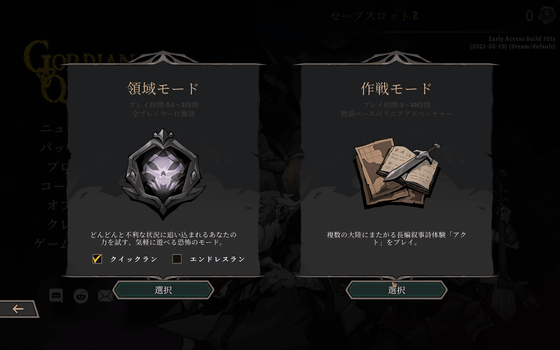
'Operation mode' is a style that clears each area in order from the world map. At the time of writing the article, only two were implemented, Act (Area) 1 'West Myr' and Act 2 'Azul Desert'. In the product version, it is planned to implement up to Act 4. The estimated time per act is 5 to 10 hours, so the total volume is quite good.

At the start, select one character. At this point, you can choose only one character, and eventually the number of parties will increase to three, but as the story progresses, characters will appear in order, so if you really want to use this character It is recommended to select at the timing. There are differences such as being avant-garde or rearguard for each character, being able to recover and hitting debuffs, but this time I chose the former soldier 'Lucius'.
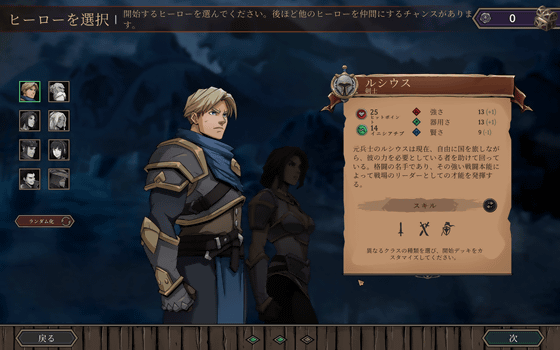
Next, decide on Lucius's 'skill'. The skill in this game means so-called 'deck' or 'card', and here it is the initial deck. Four occupations, 'Swordfighter', 'Duelist', 'Veteran', and 'Strategy' can be selected.Swordfighters mainly use attack and defense cards that do not have special effects, but duelists mainly use special attacks that give debuffs. For veterans, the main defense is to give debuffs. In the tactician, the card of the effect that works with allies is the main.
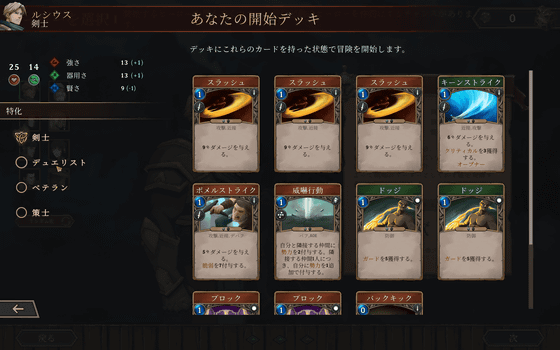
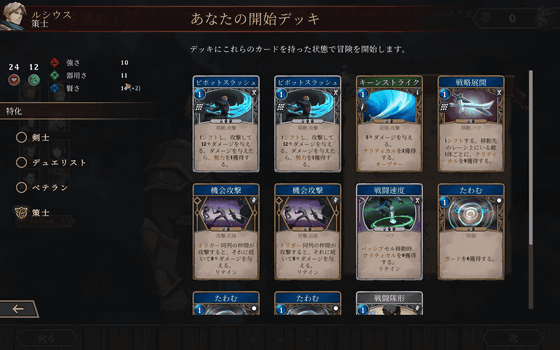
Next, select the difficulty level. There are 4 types of difficulty, 'Easy', 'Normal', 'Hard', and 'Nightmare'. The higher the difficulty level, the more physical strength and damage the enemy will have, and the enemy will make powerful special attacks. Increases the rarity of items. In addition, the game types 'Standard Mode', 'Roguelike Mode', and 'Roguelike Mode' are set in parallel with the difficulty level. The standard mode is a loose setting that can be revived in the town even if you lose the battle, but the roguelike mode is game over if it is wiped out. Roguelike mode also adds a strict restriction that 'dead characters will not come back to life'. This time we started in normal & standard mode.

In the operation mode, the story is that you sortie from the base city and wipe out the enemies that infest the world. When you move from the world map to each square, an event will occur there. The event is not only a battle with the enemy, but also a special event such as getting a treasure chest.
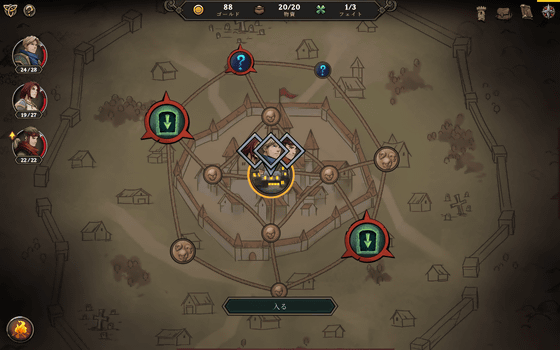
The battle screen looks like this.
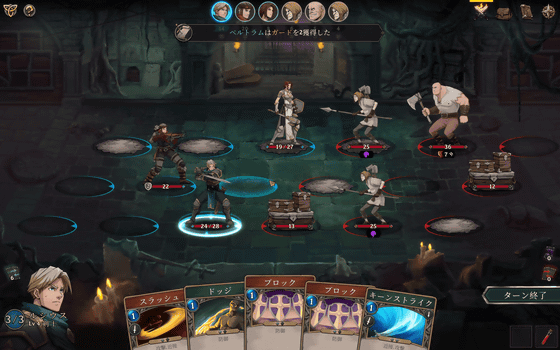
The icons lined up at the top of the screen are in order of action. Each character's turn progresses according to this order of action. In this work, you can put up to 3 characters in the party, but you do not move 3 characters at the same time on your own turn, but a system that 'turns for each character' are prepared. Action points and decks are independent for each character.

Characters whose turn has come can take actions according to their hand. However, in order to play the hand, you need to pay the action points corresponding to the card.

The initial value of each character's action points is 3, but it can be strengthened later by leveling up.
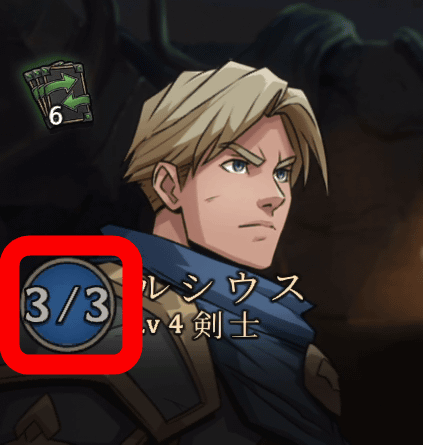
In addition, the attack card also has an icon indicating the 'attack range'. For example, the 'Kean Strike' sword icon means that you can attack the foremost enemy in the upper and lower lanes ...
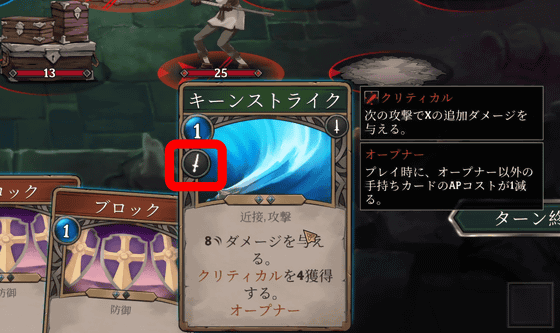
The 'remote shot' target icon means that you can attack at any position.
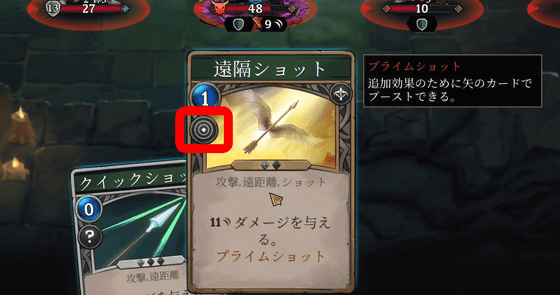
In addition to basic effects such as single attack on the enemy and increase in defense value, each card has various effects such as granting debuffs that give continuous damage and damage increase effect, and forced movement of enemy positions. In particular, cards with the 'Channel Spell' attribute, whose cost decreases according to the degree of strengthening of the character, are very powerful. With the character strengthened by 3 levels, you may be able to shoot a powerful blow at zero cost.
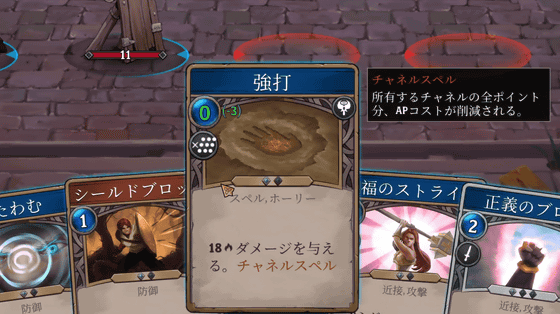
In addition, each card can raise its power and effect depending on the corresponding status. The corresponding status can be identified by the color of the card name column, red corresponds to 'strength', blue corresponds to 'smartness', and green corresponds to 'dexterity'. Gray is a card that does not correspond to any status. Since you can choose which status to raise, you want to raise only strength if you are a warrior, and only wisdom if you are a magician, but since the color of each character's card is dispersed to some extent, `` 'Raise only a single status' is rather inefficient.
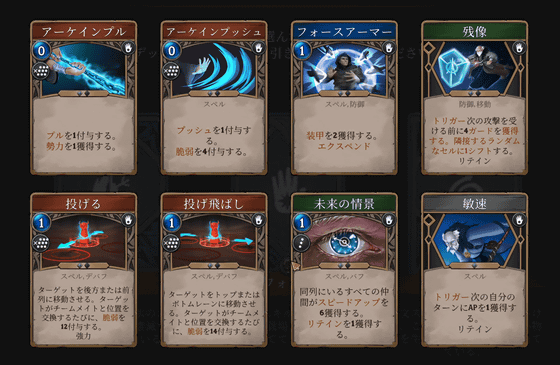
The central part represents the battle board, with the left three columns being the own camp and the right three columns being the enemy camp. Each enemy character has a different attack method, but positioning is very important because it attacks according to the position, such as 'attacking only in front of you' and 'attacking in the middle row'. Each character can move to adjacent tiles, but moving costs 1 cost.
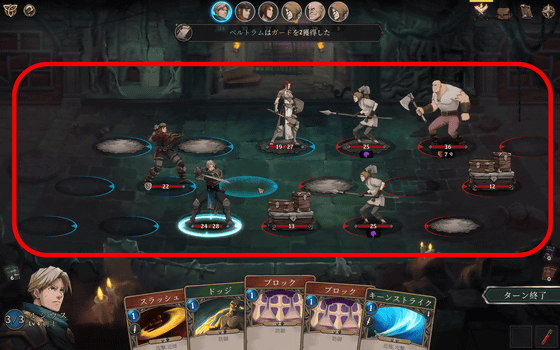
Another big point of Gordian Quest is that you can know the actions of the enemy in advance. Clicking on an enemy character on your turn will show you what the enemy does on your turn. For example, in the following scenes, it can be detected in advance that the enemy spider ring is about to release 'poisonous fangs' in front of it, so you can concentrate on defeating this spider ring or place the targeted character in a position where the attack cannot reach. You can judge that it is better to move it. Even if the battle is over, the HP of each character does not recover automatically, so it is important to avoid being hit as much as possible.
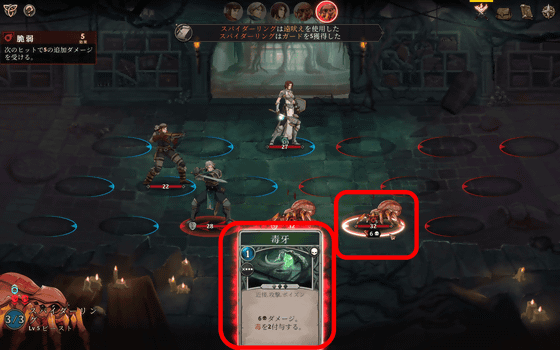
The actual battle looks like this. In the movie below, there are three characters playing, but there are quite a lot of allies because multiple NPCs are encouraging. Furthermore, the board has four lines, making it a large-scale battle.
After the battle, in addition to experience points ...
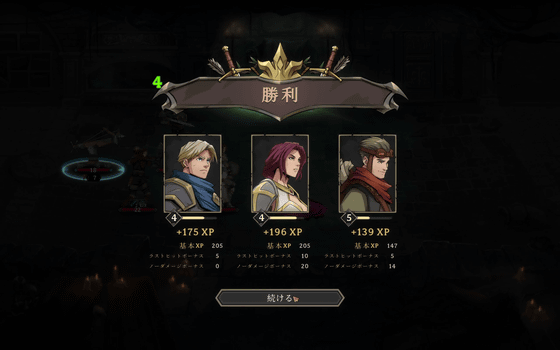
Get money and items.
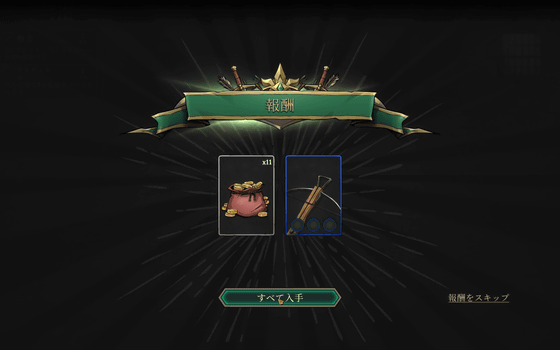
Earn skill points when you level up with experience points. By consuming skill points, each character can strengthen various abilities from the
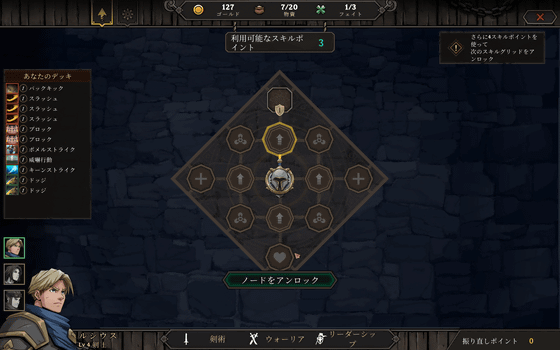
In the skill grid, you can strengthen the cards ...
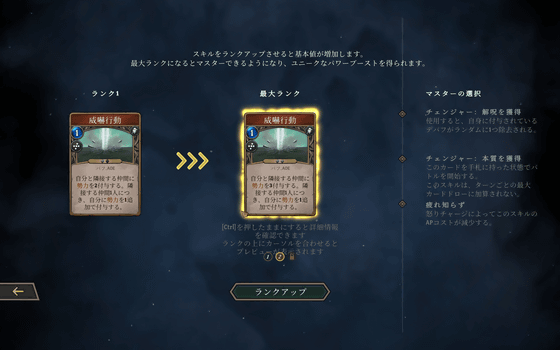
Strengthen the status that raises the effect of the card ...
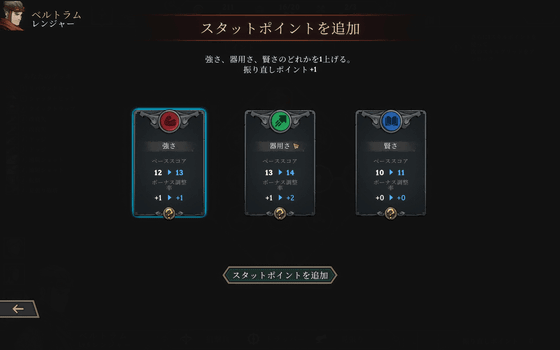
Acquire passive abilities ...
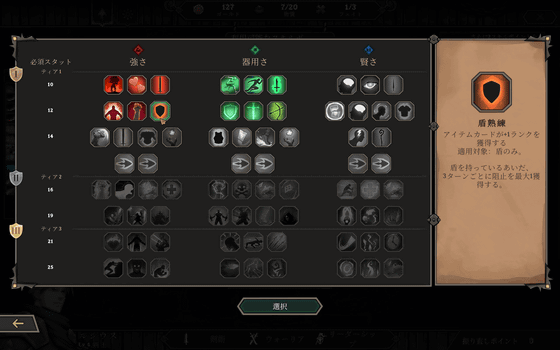
It is possible to acquire new cards.

You can also extend the skill grid itself. When Lucius, who started as a swordfighter, became Lv5, he had 'swordsmanship' specializing in one-on-one combat, 'warrior' focusing on crowd control, and 'leadership' specializing in buffing himself and his friends. You can add one from the seed skill grid. In this way, you can set the direction of growth for each character at your own discretion.
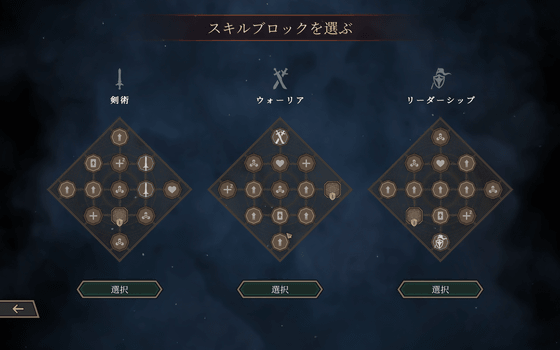
Character abilities can also be supplemented by equipment. Equipment can be obtained from enemy drops, weapon stores, etc., and has the effect of improving basic abilities and adding cards to the deck.
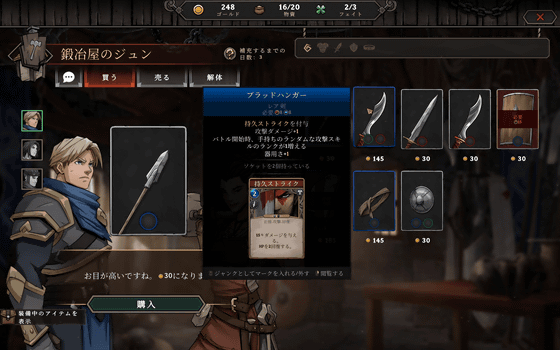
You can also strengthen the equipment by fitting runes. The following 'sustained' runes are excellent items that give the equipment-specific card the effect of 'recovering 2 HP when used'. The value of 2 seems to be small, but it is especially useful in situations where recovery methods are limited.
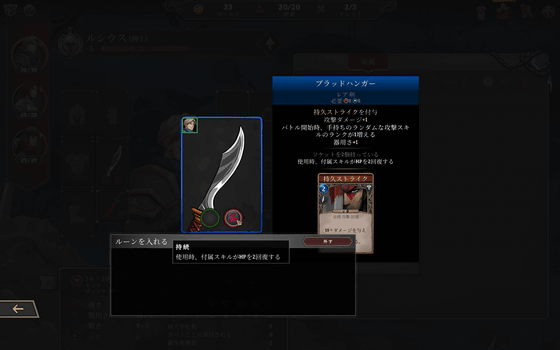
In addition to combat and purchase, you can also get experience points and items by events. There are various events, such as following a night thief and attacking them, and dealing with a suspicious alchemist, and the development will change depending on your choice and the roll of the dice.
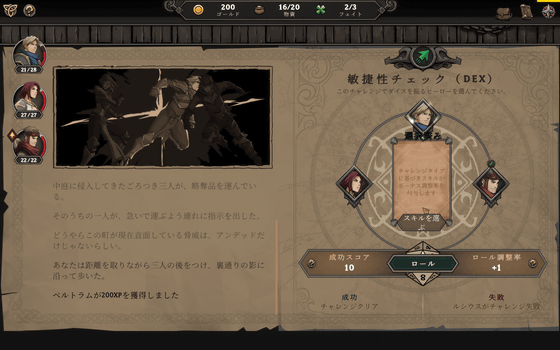
In strategy mode, the story progresses around the base city. In addition to the progress of this story, you can also undertake requests such as 'I want you to recover the stolen goods' and buy and sell items, so the city will be taken care of many times.
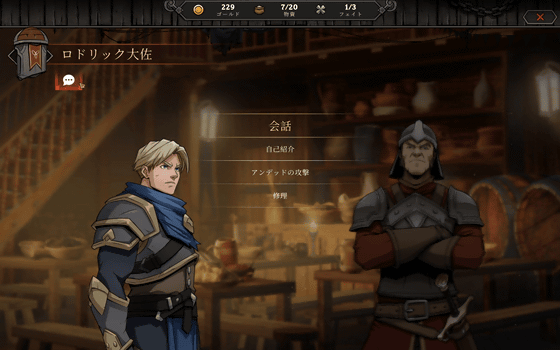
On the other hand, in territory mode, these bases do not exist, and the player's party wanders through a field full of enemies called 'territory'.
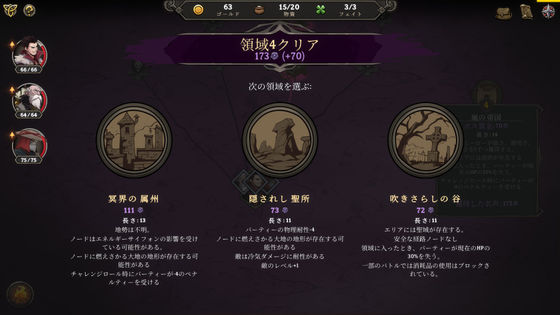
Area mode is a mode like 'Slay The Spire' that selects one route from the routes that are confused like Amidakuji and proceeds.
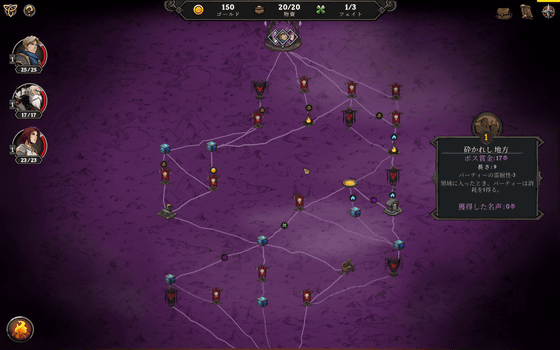
You can know in advance what kind of event will occur in each square, but once you select a route, you can not go back. Therefore, when choosing a route, not only the square in front of you, but also the square behind it is important.
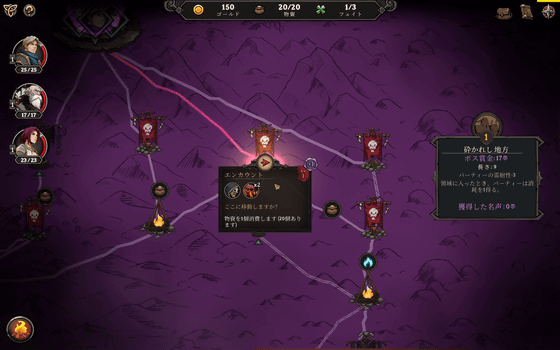
In Operation mode, you can always return to the city to recover your character, but in Area mode, there is a limitation that the city does not exist. In such a case, the event mass 'camp' is important. In territory mode camp, in addition to recovering characters, you can also strengthen abilities and acquire cards.
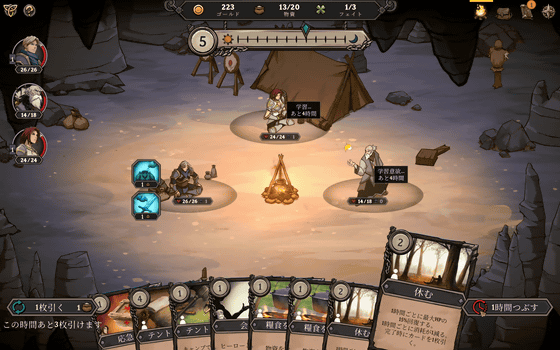
However, if you run a camp, the resource called 'Supplies' will decrease, and if you reduce the supplies or strengthen your abilities, you will be forced to obtain a disturbing card called 'Waste'. Since exhaustion has no effect and cannot even be used, it puts pressure on your hand and hinders your actions. As shown below, your hand may be exhausted and you may not be able to take proper action. It is important not to reduce supplies in order not to increase consumption, but it is important to select a route that can supply supplies because it can be replenished by mass events on the route.
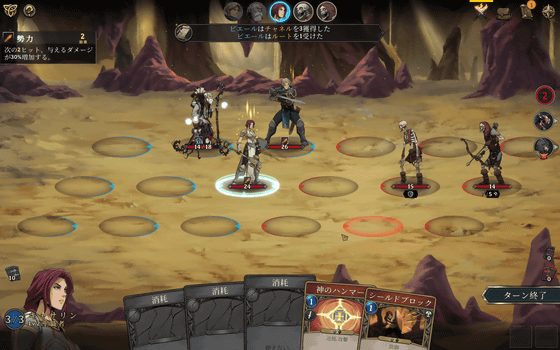
The strategy mode is highly random, and the difficulty level of guaranteeing that it will be made into Kotenpan at the beginning. However, even if it is wiped out, you can get points called 'Fame' that can be used to release the element called 'Artif' that strengthens the ability at the start of the game according to the progress. What kind of artifacts can be obtained by fame points is random, but there are also powerful artifacts such as 'Start with one rare item'. Once released, the artifact will not die, so you can move forward little by little by repeating 'Get fame points and release the artifact every time it is wiped out ...'.
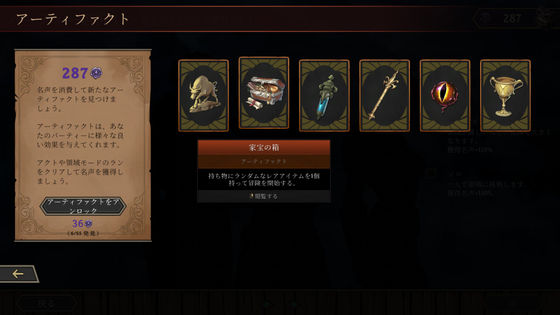
When you actually play it, the individuality of the deck for each character is strong, and the RPG-like element that you can choose the direction of growth from various options depending on the elements such as skill grid and equipment is stronger. If Slay The Spire is a game with the theme of lightness of the lap premise that it will die quickly depending on luck, Gordian Quest was a type of game where the RPG element is strong and you sit down slowly in one play.
'Gordian Quest' can be purchased on Steam for 2050 yen including tax. Although it is in Early Access at the time of writing the article, it is updated quite frequently, and it can be seen that development is being actively carried out toward the completion of the work.
Steam: Gordian Quest
https://store.steampowered.com/app/981430/Gordian_Quest/
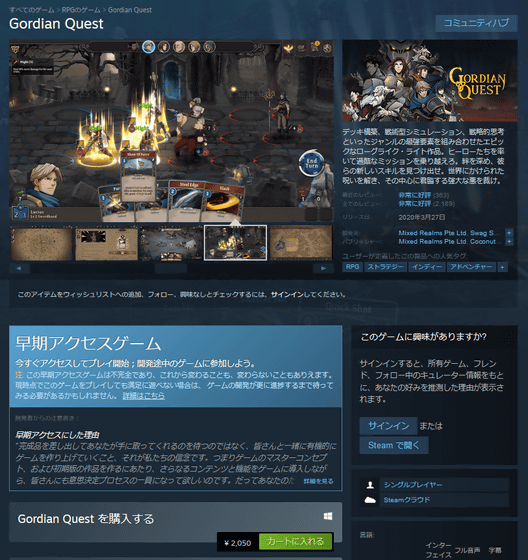
Related Posts:







